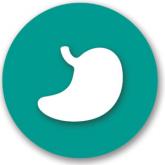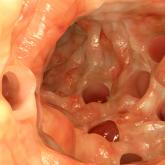Article

COPD inhaler therapy: A path to success
- Author:
- Michael Arnold, DO, FAAFP
- Cate Vordtriede, PharmD, BCPS
- Christina Chadwick, DO, MS, ARDMS
- Evan Trivette, MD, MMAS
Keys to therapeutic success include choosing the right device and drug regimen, providing rigorous patient education, and reducing environmental...
Article

First-time, Mild Diverticulitis: Antibiotics or Watchful Waiting?
- Author:
- Bob Marshall, MD, MPH, MISM, FAAFP
- Shailendra Prasad, MBBS, MPH
- Mary Alice Noel, MD
- Jeffrey Burket, MD, FAAFP
- Michael Arnold, DO, FAAFP
- Benjamin Arthur, MD
- Nick Bennett, DO
- Ashley Smith, MD
Don’t jump to antibiotics for mild, uncomplicated diverticulitis, a recent clinical trial says. Observation may be just as effective.
Article

First-time, mild diverticulitis: Antibiotics or watchful waiting?
- Author:
- Bob Marshall, MD, MPH, MISM, FAAFP
- Shailendra Prasad, MBBS, MPH
- Mary Alice Noel, MD
- Jeffrey Burket, MD, FAAFP
- Michael Arnold, DO, FAAFP
- Benjamin Arthur, MD
- Nick Bennett, DO
- Ashley Smith, MD
Don't jump to antibiotic Tx for mild, uncomplicated diverticulitis, a recent RCT says. Observation may be just as effective.
